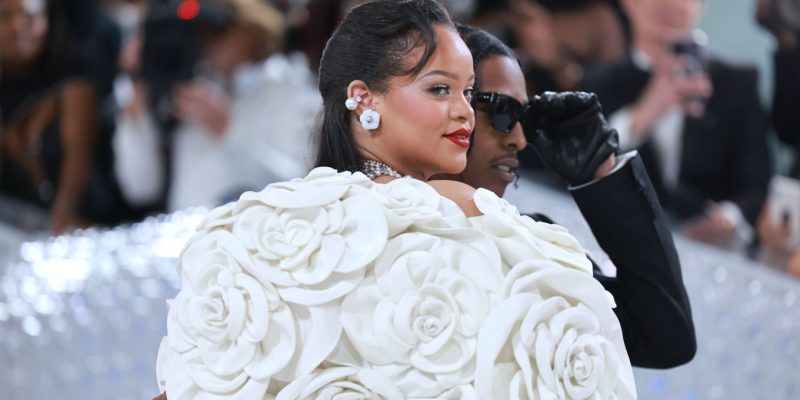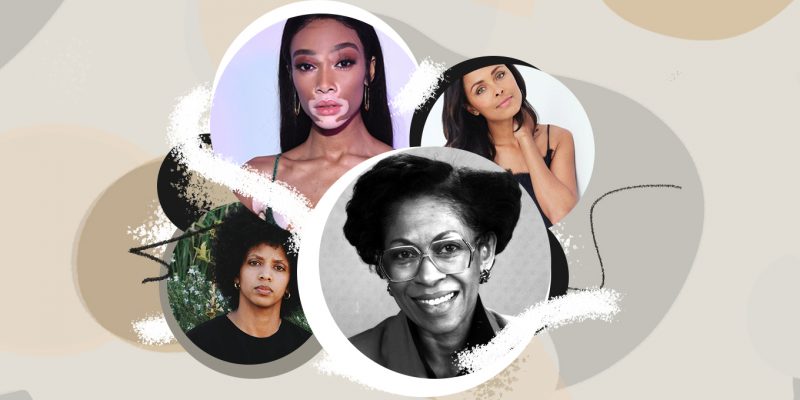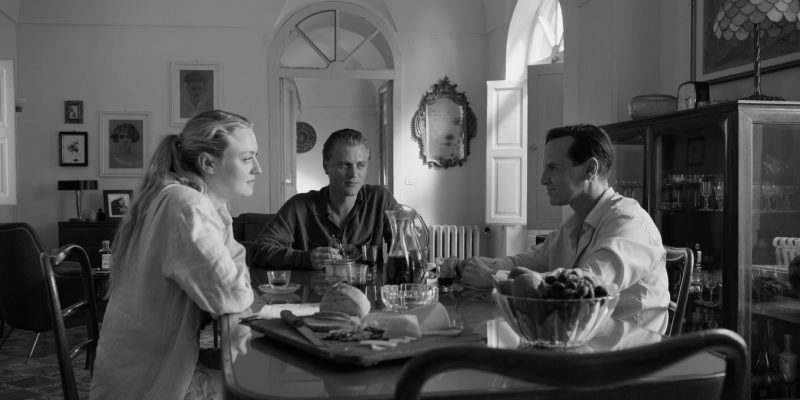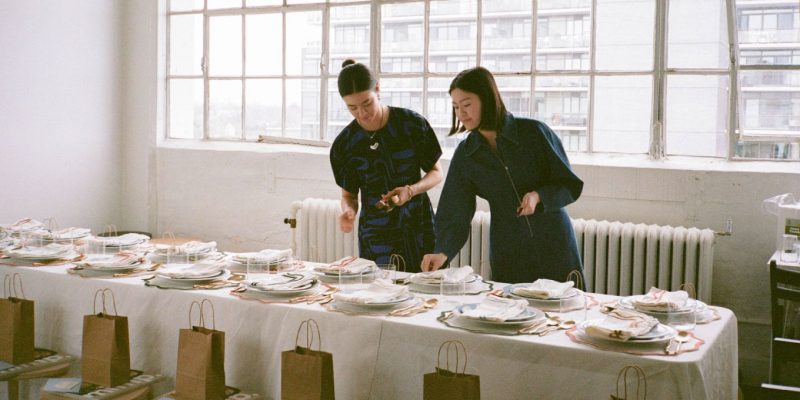Music
Billie Eilish Is Calling the Shots
With her sophomore album debuting at number one around the globe, Billie Eilish opens up about making music, directing her own videos and why she doesn’t give a $%#! what anyone has to say about her hair, clothes or sexuality.
by : Molly Lambert- Oct 15th, 2021
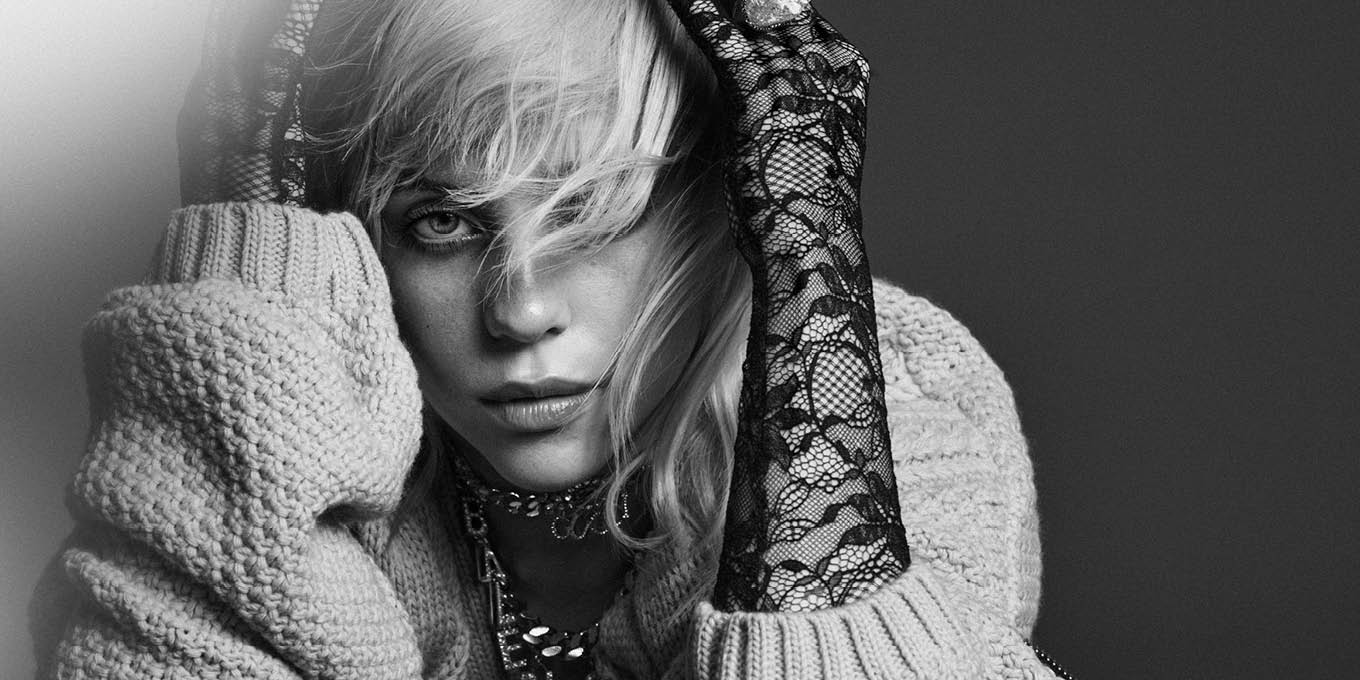
Alique
On a warm July evening in the backyard of a private Beverly Hills mansion secured by Spotify, a crowd of A-list stars including Olivia Rodrigo, Ben Platt, Willow and Jaden Smith, Amanda Kloots and Khalid is counting down the minutes until the official release of Billie Eilish’s sophomore album, Happier Than Ever. Eilish is both excited and nervous about the world finally listening to her new album—she likens the experience to letting other people taste her “favourite cookie” that she’s been baking in secrecy for the past year. Wearing vintage Prada sunglasses, a copper Miaou corset with a sheer black long-sleeved Maison Margiela shirt and vegan TLZ L’Femme strappy black vinyl pants, she addresses the crowd from the top of a staircase overlooking an illuminated cerulean pool. “This is fucking nuts!” she says with a throaty cackle. “I am so happy to see people in person and get hugs and see smiles…and my album comes out in two minutes!” As she shakes her microphone triumphantly in the air, the crowd bursts into wild cheers.
“I just love this album,” she says, leaning over the wrought-iron balcony. “It’s my favourite thing I’ve ever created.” After thanking her brother and collaborator, Finneas, she throws her head back and lets out a gleeful whoop. “I’m just so stoked!” she says. At exactly 9 p.m., the album bursts through the sound system. Fifteen minutes into the listening session, the title track begins to play. And as the lush, melancholy ballad explodes into a cathartic blast of hard rock, Eilish executes a perfect rock-star move—she jumps into the pool fully clothed. Without missing a beat, her two best friends, Zoe and Drew, jump in with her, and they all start singing the lyrics together at the top of their lungs.
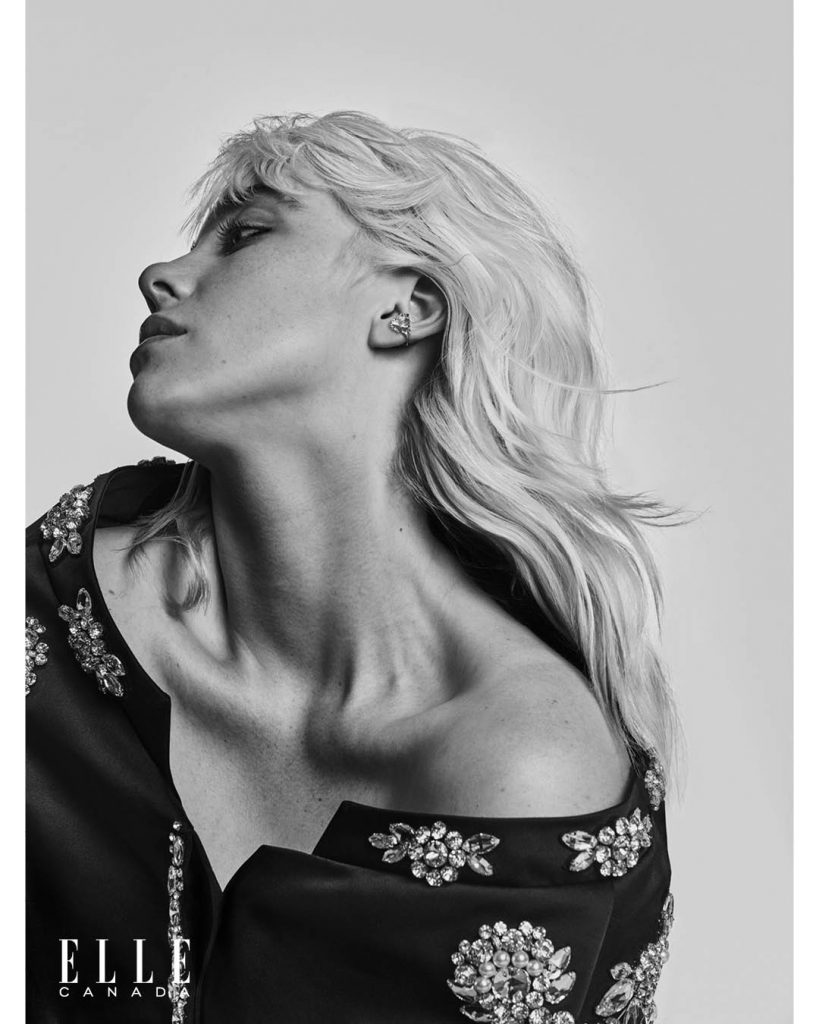 Alique
AliqueCoat (Erdem) and fingertip ring worn as an ear cuff (Chrishabana)
“I lost 100,000 followers. People are scared of big boobs.”
“Oh, my God—it was amazing!” says Eilish, reflecting back on that wildly spontaneous moment one week after the party. “It was completely unplanned. I was standing on the edge of the pool singing, and my friend Carly was like, ‘Billie, get in the pool!’ And I don’t know, I was just feeling in the moment, so I got in, [and I was] wearing four-inch-high platform boots!”
From the side of the pool, Finneas watched the joyful spectacle with bemused appreciation. “I was like, ‘Oh, there she goes!’” he says, noting that it was classic Billie behaviour.
“One of the many great qualities she possesses is her appetite for fun.” Eilish stayed in the pool for most of the party. Almost all of her friends eventually got in with her. “I kept pulling them in,” she says with a laugh. The Gatsby-esque soiree was meant to be an immersive experience of her album, and the impromptu aquatic rave allowed Eilish to direct the experience—both for herself and others. “I love big parties, but they can be a little overwhelming because everyone wants to talk to you,” she says. “In the pool, I could call my own shots. I would swim up to somebody, talk to them and then swim away and talk to somebody else.”
These days, Eilish is calling the shots more than ever before. After famously shooting to the top of the music charts at just 13 when “Ocean Eyes,” the single she created in her L.A. bedroom with Finneas, went viral on SoundCloud, the seven-time Grammy winner is upping the ante for her highly anticipated second studio album. In addition to writing her own songs (some with the help of Finneas), she directed all the videos. “I am a very visual person, and music videos have always been my favourite form of artistry, ever since I was a kid,” she says. “Since the beginning, almost all of my videos were my own ideas. I just didn’t know that I could direct them. It’s hard to translate an idea that you have in your own head—to make somebody else understand it—and then make it come to life. Sometimes you’ve just got to do it yourself, even if it’s hard.”
For the title song’s video, Eilish was filmed in a dreamlike sequence escaping from a flooding house. “Water used to be my biggest fear—I was terrified of drowning and having my head stuck underwater,” she says. “But I’m a daredevil. I want to do everything that scares me.” To conquer her phobia, the pop star jumped right in, literally and figuratively. The video’s water stunts were shot in a giant outdoor tank that was also used in the obstacle-course game show Wipeout. With the aid of clever sets and a weighted scuba instructor who pulled her underwater, Eilish swam through the flooded house, holding her breath through multiple takes, and surfaced on a constructed rooftop. “Half of the video was shot underwater,” says Eilish. “So I pretty much overcame my fear of water. It was fucking crazy, dude.”
Even the simple act of getting dressed has posed challenges for Eilish, who spent the early years of her career honing a silhouette specifically designed to deflect attention from her body. Many of her fans were deeply attached to her signature oversized-streetwear, skater-goth aesthetic, which some saw as a refusal to be sexualized. So when she started experimenting with new looks, occasionally stepping out in more form-fitting clothes, the reaction from certain fans was swift—and vicious. Beneath an Instagram shot of her wearing a Miaou tomato-print corset with a lace bra peeking out, trolls left comments like “disingenuous” and “cringy asf.” One person posted, “The industry really changed you huh smh.”
While Eilish understands why some fans might want her to remain suspended—Peter Pan-like—in the exact state in which they first encountered her, she struggles to process the vitriol. “People hold on to these memories and have an attachment,” she says. “But it’s very dehumanizing.” The corset post represents a perfect snapshot of the insanity. “I lost 100,000 followers just because of the boobs,” she adds with a rueful laugh. “People are scared of big boobs.”
Water isn’t the only fear Eilish has confronted head-on recently. For several years now, she hasn’t even felt safe leaving her own home. After her address was leaked online, stalkers and paparazzi started showing up in her yard. And as her fame has grown, she has endured relentless scrutiny on the internet for everything from the way she dresses to whom she dates. “Or my sexuality!” she says. “Like, oh, yeah, that’s everyone else’s business, right? No. Where’s that energy with men?” Like many stars who are thrust into the spotlight at a young age, she was initially blindsided by the relentless drumbeat of criticism. “I just wanted to make a song once, and then I kept making songs. I never said, ‘Hey, pay attention to my life.’ All my friends know I don’t wanna see any of [the negative chatter]. When people send me something mean, it hurts my soul.”
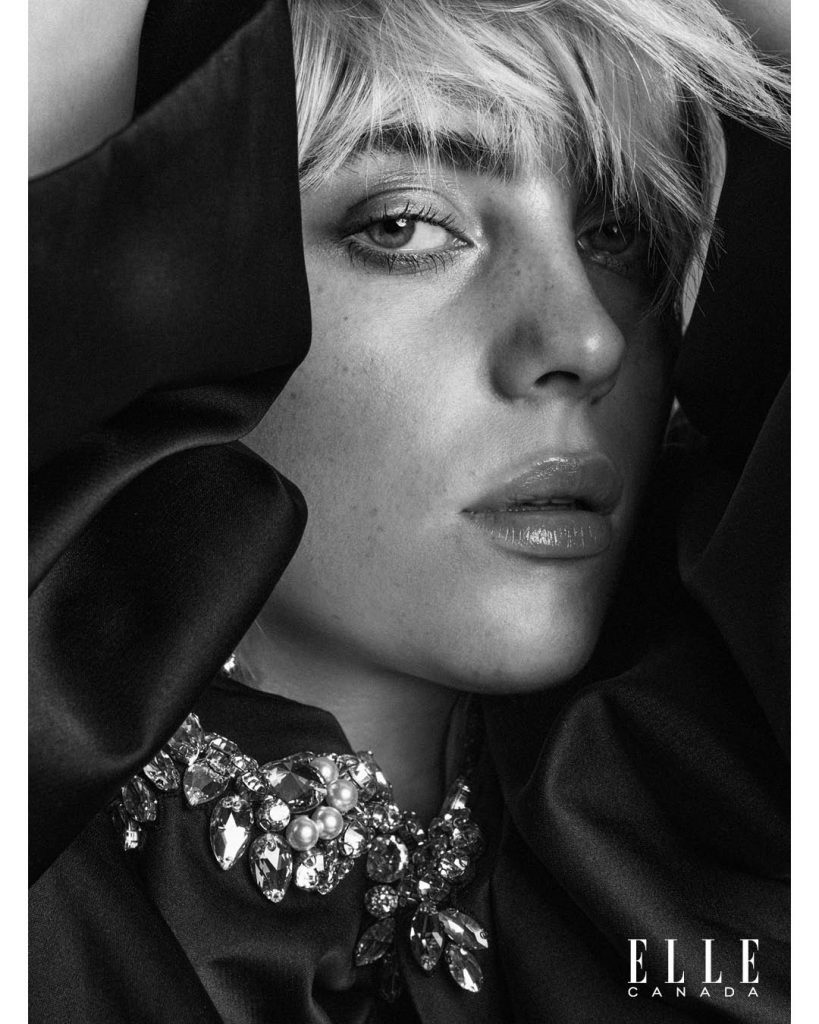 Alique
AliqueCoat (Erdem)
Eilish’s struggles are far from unique; double standards within the music industry go way back. “The problem is, we still live in a very sexist world where women are put into categories,” says Madonna, who knows whereof she speaks. “You’re either in the virgin category or the whore category. Billie started off in a non-sexualized category, not pandering to the masses and not using her sexuality in any way, which was her choice, and God bless her for that—after all, she’s been a teenager all this time. [But] if she wants to turn around and take photographs where she is portrayed as a feminine woman, showing her body in a way that she hasn’t in the past, then why should she be punished for it? Women should be able to portray themselves in any way they want. If Billie were a man, no one would be writing about this. A man can show up dressed in a suit and tie for the first three years of his career and then the next month he could be dressed like Prince or Mick Jagger—shirt off, wearing eyeliner—and no one would say a word.”
At 19, Eilish is still evolving. “You’re not even supposed to really know who you are until you’re at least my age or older,” she says. She still mixes streetwear with designer clothes, and—as her outfit at the release party attests—she is not going to let a few angry haters dictate how she dresses. For our interview, which takes place in a private suite at L.A.’s swanky The London West Hollywood hotel a few days before the album-release party, Eilish wears baggy ecru basketball shorts and a white hoodie with images of anime bikini girls bleeding green goo over a Prada soccer jersey. Her buttery-blond hair, which she recently debuted online to much fanfare, is cut in a shoulder-length shag that swishes when she talks. Though she isn’t wearing a hint of makeup, her large ice-blue eyes give her an otherworldly quality that calls to mind the hypnotic lyrics “Fifteen flares inside those ocean eyes.”
Eilish says she dyed her hair blond because she was tired of acid green. “I couldn’t go anywhere with that hair because it was so obviously me,” she says. “I wanted anonymity.” When she first went blond, she suddenly felt free—like she was reintroduced to the world. “I went to a park with a friend, and I was like, ‘No, I can’t take off my hood!’ I was terrified of the paparazzi and these stalkers I’ve had. But my friend was like, ‘Don’t worry: You’re okay. Nothing’s gonna happen.’ And I took my hood off, and I felt like a new person.”
Like anyone who colours their hair, Eilish also just wanted a change. “I had no goal of ‘This is going to make everybody think differently of me,’” she says. “I’ve had different-coloured hair and [different] vibes for everything I’ve ever done. I wanted this album to have its own thing.” Still, many fans resisted the new look, and they made their opinions known. “The other day, I posted a video from when I had green hair, and I saw people go, ‘I miss this Billie, the green-haired Billie,’” says Eilish, who is sprawled out on a giant L-shaped couch, her feet dangling over the edge. Her bodyguard hovers by the door. “I’m still the same person. I’m not just different Barbies with different heads.”
Eilish doesn’t want fans to overthink her hair choices or her decision to wear more-revealing clothing. In fact, ditching the uniform of cavernous sweatsuits was less of a strategic move than a practical one for Eilish, who loathes the summer heat in L.A. so much that it gives her a kind of reverse seasonal affective disorder. “The other day, I decided to wear a tank top,” she says. “It wasn’t even a provocative shirt. But I know people are going to say ‘Holy fuck, she’s dressing sexy and trying to make a statement.’ And I’m like, ‘No, I’m not. It’s 500 degrees, and I just want to wear a tank top.’”
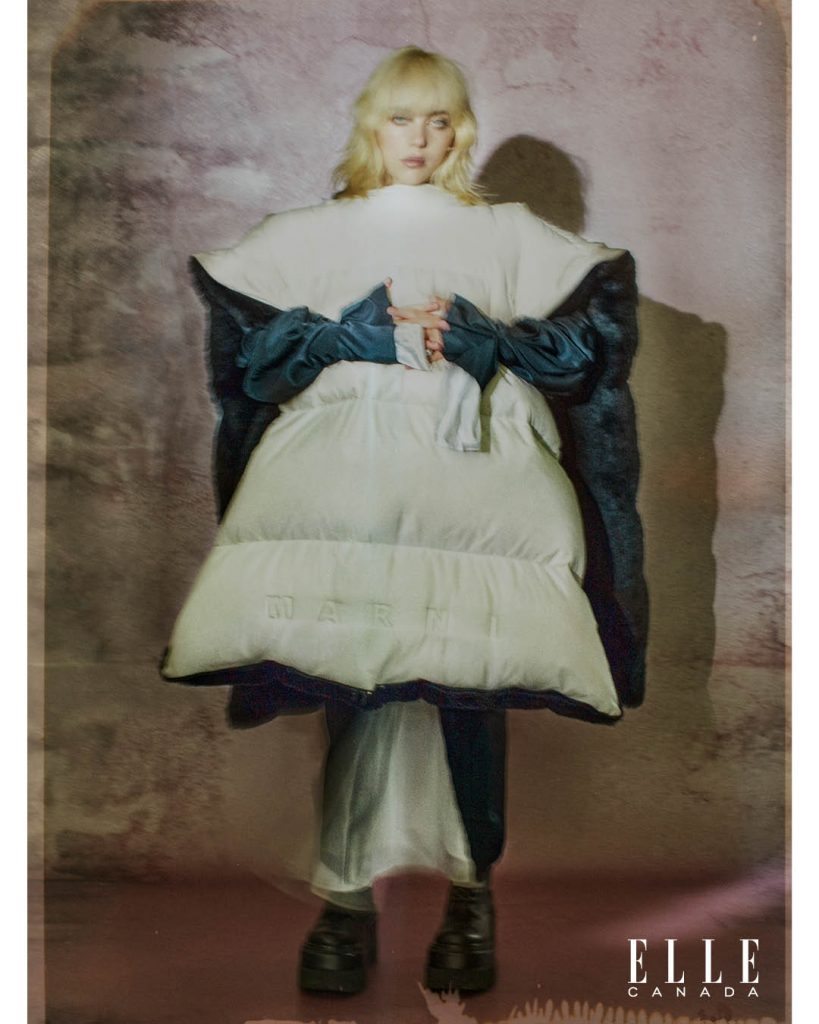 Alique
AliquePadded poncho and dress (Marni), ring (Lillian Shalom) and boots (Junya Watanabe Comme des Garçons)
She feels burned out on social media. “I’m jealous of people who don’t have it,” she says. “I really wish there was a way to avoid it—literally delete my account but still have contact with the fans. I want to be able to have both, but you can’t.” She misses live performing, which is her favourite way to maintain a connection with fans.
For Eilish, whose life had been “going, going, going,” the pandemic offered a chance to pause and reflect on how her life has changed with success. And while Happier Than Ever is not a “COVID album” per se, it was produced during lockdown, and one can’t help but imagine that the fear and isolation of this time brought some intensity to the creative process. “The album came from a lot of self-reflection,” she says, nervously tracing patterns in the velvet couch with her fingers. “Happier Than Ever is really just me processing trauma.”
Success may have made Eilish a critical darling, but it couldn’t protect her from the challenges facing many young women today: toxic boyfriends, a complicated relationship with one’s own body, the fear of doing or saying the wrong thing online. Moody and raw, the lyrics on Happier Than Ever explore the challenges she has endured over the past few years with unflinching honesty. Throughout the album, Eilish grapples with dark subjects like how the human need to be desired is twisted back on young women and turned against them, how victims are blamed for their own assaults and how girls are pushed into certain moulds and punished when they don’t fit into them. “Making this album was cathartic and freeing,” she told the crowd of friends and music-industry insiders at her album-release party.
On Happier Than Ever, Eilish’s signature breathy vocals are still there, but she leans into the power of her singing voice more and more. She cites jazz vocalists like Julie London, Johnny Mathis and Peggy Lee as her heroes and lights up when asked about “Billie Bossa Nova,” her take on the Brazilian bossa nova genre. “‘The Girl From Ipanema’ is one of my all-time favourite songs,” she says excitedly.
To fans and critics alike, her sophomore album marks a triumphant and logical progression from the first, the music of an extraordinarily talented singer-songwriter who refuses to rest on her laurels and isn’t afraid to explore the darkest corners of the female experience. She chose to make an artistic album—the album she wanted to make—instead of pandering to the latest trends and charts and other people’s expectations. “If you are making an album to please other people, you can sometimes lose sight of what would really make you happiest with your music,” says Finneas. “Billie is the opposite of that. Her North Star is just like ‘I love this’ or ‘I don’t love this.’” Her vision paid off. Crushing the pop-music status quo, which typically favours catchy and relatable music, Happier Than Ever debuted at number one in 19 countries, including the U.S. It also nabbed the record for highest vinyl sales upon release over the past 30 years.
Find the full story in the November issue of ELLE Canada — out on newsstands and on Apple News+ October 18th. You can also subscribe for the latest in fashion, beauty and culture.
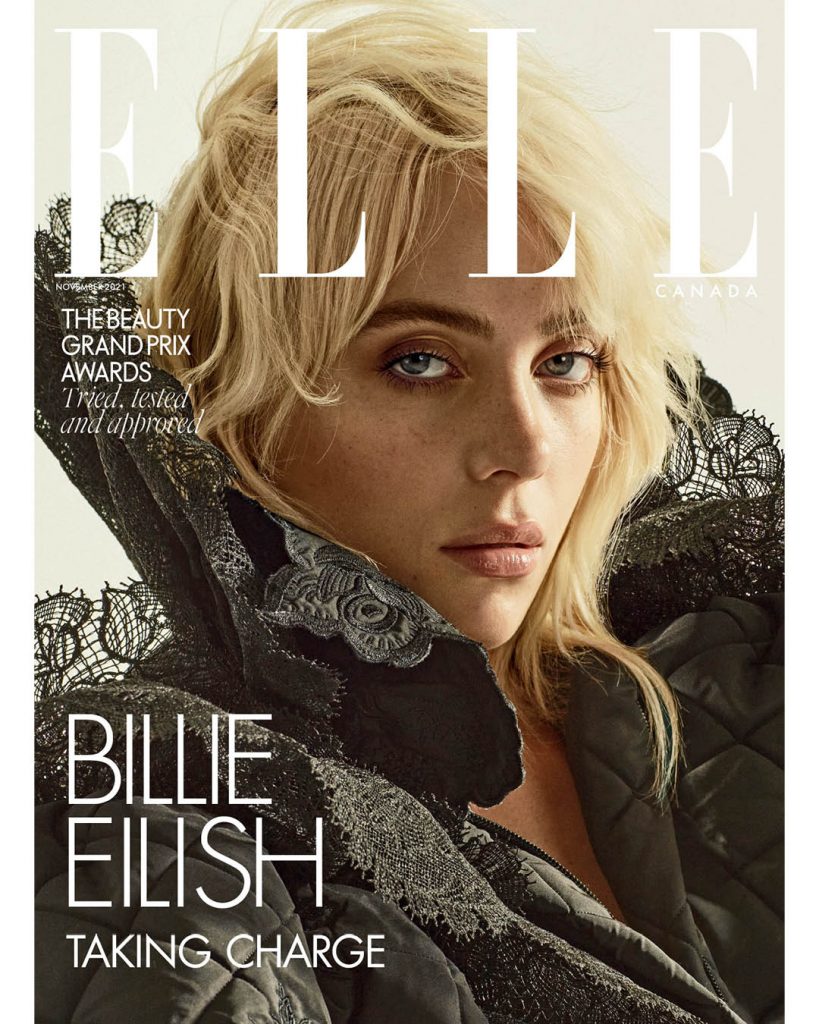 Alique
AliquePhotographer: Alique (for ELLE US); stylist: Patti Wilson; hairstylist: Benjamin Mohapi (Salon Benjamin); makeup artist: Robert Rumsey (A-Frame Agency); manicurist: Ashlie Johnson (The Wall Group); set designer: Nicholas Desjardins (Streeters); producer: Honor Hellon (Honor Hellon Production).
Newsletter
Join our mailing list for the latest and biggest in fashion trends, beauty, culture and celebrity.
Read Next
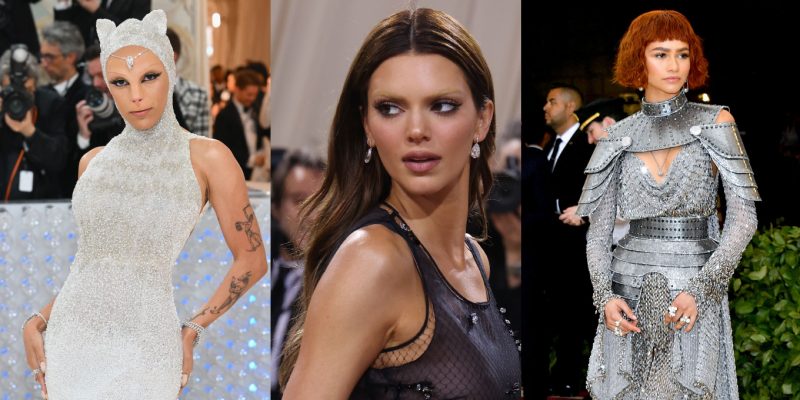
Beauty
The Best Met Gala Beauty Looks Of All Time
From Taylor Swift's 'Bleachella' era to Rihanna's iconic 2011 braids, meet the best beauty moments in Met Gala history.
by : Katie Withington- Apr 26th, 2024
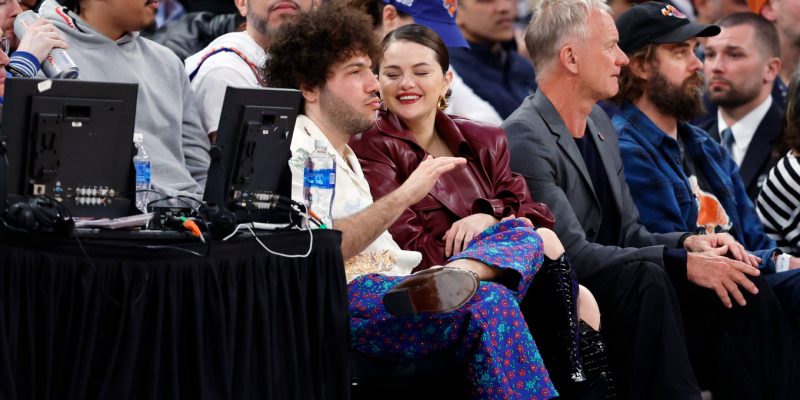
Culture
Benny Blanco Says He Fell in Love With Selena Gomez Without ‘Even Noticing’ It
Allow Benny Blanco to tell the straight-from-a-rom-com story of how he realized his feelings for his girlfriend and longtime friend.
by : Alyssa Bailey- Apr 26th, 2024
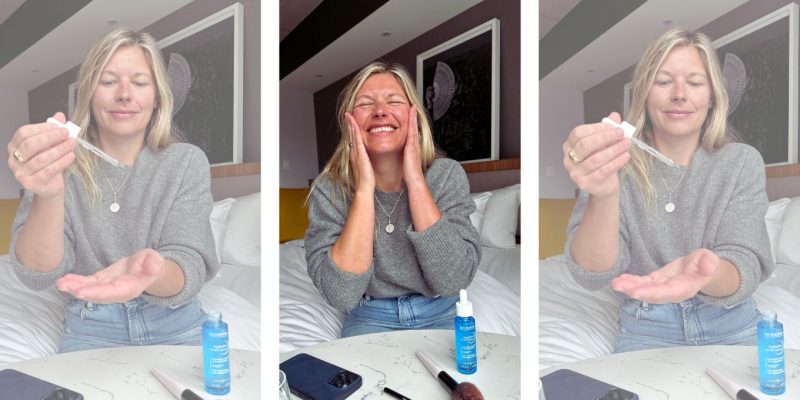
Beauty
Tested and Approved: Your New Hydrating Skincare BFF
This new product has all of your skin’s thirst-quenching needs covered.
by : ELLE Canada- Apr 17th, 2024

